Hello World,
In our previous post, we have quickly describe how to perform an Ubuntu 23.10 Desktop installation. The process is quite straightforward and at the end of the process you should have an up and running Ubuntu machine. If you are a regular reader, you know that we like to work with xRDP Software package and that we usually release on regular base a small script that can automate the installation of the xRDP software on Ubuntu machine.
Since there are some changes in Ubuntu 23.10, we have decided to first perform a manual installation of xRDP package software. We will be using the package from the Ubuntu repository and see if any changes introduced by Ubuntu 23.10 might break or improve the xRDP installation process.
So, let’s try this…
Overview
In this post, we will perform a manual “standard” xRDP installation on Ubuntu 23.10. So, we have installed our Ubuntu 23.10 and we are ready to install the xRDP package from Ubuntu repository and see what has changed and if these changes would break xRDP functionalities.
Assumptions
For this post, we have make some assumptions.
- The Ubuntu 23.10 Beta release will be used
- At time of writing, all available updates were installed on the Ubuntu machine
- No alternative Desktop will be used. Default Gnome desktop will be the default desktop accessible via the xrdp session
- We are using the standard xrdp package available within the Ubuntu repository for Ubuntu 23.10
- Ubuntu machine has been installed as virtual machine using Hyper-V solution
The following screenshot shows the current version of Ubuntu we are using and also shows you that no xRDP software is installed yet.
Click on picture for better Resolution
Installing xRDP software
The manual installation is quite straight forward nowadays. You simply need to open a terminal console and execute some commands. The manual installation process will be using the xRDP packages available in the Official Ubuntu Repository. To perform your installation, you simply need to issue the following command
sudo apt-get install xrdp
Click on picture for better Resolution
You might also be prompted for a password. Provide it and proceed with installation
Review the information on the screen… You should see that additional packages (xorgxrdp) will be installed as well to provide a better experience. If requested Press Y to proceed with the installation. Wait for the installation to complete
At this stage, you can check that xRDP has been installed and you can check which version has been made available. In the terminal Console, simply type
xrdp -v
Click on picture for better Resolution
You can see that we are using the latest version of xRDP package (i.e. 0.9.21.1)
Make a remote Desktop connection
At this stage, we will check what happens when performing a remote desktop connection against Ubuntu 23.10 when no post configurations actions have been made. The xRDP package coming from Ubuntu repo will allow you to perform a remote desktop and enable Clipboard and drive redirections. Sound redirection is not included with the xrdp package from Ubuntu. We will need to tackle the sound redirection differently (and in another post)
! Important !
Before performing your remote connection, you have to know the ip address used by the Ubuntu machine. You will also need to ensure that no one is login locally on the Ubuntu machine. If this is the case, the remote session will not succeed. You will either be disconnected immediately or only see a black screen.
So, first logout from the Ubuntu machine and from a windows machine, start your favorite remote desktop client.
Click on picture for better Resolution
You will see the Green background of xRDP software presenting you some login box. Provide your username and Password
Click on picture for better Resolution
If the credentials are correct, you will end up in your remote Session.
Click on picture for better Resolution
As in the past, (so this was expected), the Desktop in the remote session is different than the one you are used to. When login locally to Ubuntu, you have access to the Ubuntu Desktop with the Dockbar on the left. When performing a remote connection to Ubuntu (with no additional post configuration), you will end up with the vanilla Gnome Desktop.
Quick Fix for Ubuntu Desktop
To quickly fix the issue with the different desktops between local session and remote session, we have used the following code. We have logged in locally in Ubuntu 23.10, run this code from Terminal console. We have then logged off again and tried again the remote desktop session
DesktopVer="$XDG_CURRENT_DESKTOP" SessionVer="$GNOME_SHELL_SESSION_MODE" ConfDir="$XDG_DATA_DIRS" sudo sed -i "4 a #Improved Look n Feel Method\ncat <<EOF > ~/.xsessionrc\nexport GNOME_SHELL_SESSION_MODE=$SessionVer\nexport XDG_CURRENT_DESKTOP=$DesktopVer\nexport XDG_DATA_DIRS=$ConfDir\nEOF\n" /etc/xrdp/startwm.sh
Using this simple script, we should be able to get the same look’n feel in your Remote Desktop session and you should see your Ubuntu Desktop within your remote session
Click on picture for better Resolution
Interesting Change in Behavior # 1 – Infamous Popup
There is, however, a little change that has been introduced in Ubuntu 23.10 and xRDP. In the past, with no post configuration, if you would login remotely to your Ubuntu system, Polkit would kick in and would prompt for password. Do you remember the Infamous popup…. seems it’s not there anymore….
Click on picture for better Resolution
We do have time to time a crash popup showing up both in local session and in remote session. We will need to see if this is related to the Beta version or if Polkit is still needed to avoid this error message
Click on picture for better Resolution
Interesting Change in Behavior #2 – Nautilus as root
In a previous post, we have explained how it was possible to run nautilus as root within your remote session. However, reading through this post, you will notice that this “feature” is not working on each Ubuntu version. For example, in Ubuntu 22.04, the approach described would not allow a user to run nautilus as root. Usually, there is no need and you can perform the necessary actions using your Terminal Console. However, some readers had the questions and they feel more comfortable with a GUI. This is why we have written about how to run nautilus as root.
In Ubuntu 23.10, ff you follow the instructions of this post (xRDP – How to run Nautilus as root user within remote session), you should be able to start your nautilus as root
Click on picture for better Resolution
This is again another small change that might indicates that Gnome 45 has fixed something…..
Interesting Change in Behavior #3 – Polkit Changes
As mentioned in our previous post, Polkit engine has been upgraded in Ubuntu 23.10 and new syntax and process needs to be implemented in order to enable exception in the Polkit Settings. For example, if you try to add user to your system using the GUI from your remote session, you will see something like this
Click on picture for better Resolution
However, if you try to perform the unlock, nothing happens. This is expected because Polkit is blocking this action when connected remotely on the system (see this post). In the past, we would create a pkla file containing a rule that would allow the execution of such code in the remote session. However, since the engine has been updated, the pkla file cannot be used anymore. There will be a need to update the code we were using so far… We have been already working on updating these codes and we should publish more information soon…but this would be for another post….
Final Notes
Voila ! This is it !
It’s a long time we have performed a manual installation of xRDP on Ubuntu Desktop (with Gnome Desktop Interface). Most of the original issues detected with previous Ubuntu versions are still there and there is still a need to perform some post configuration actions after installing xRDP. From this post, it’s clear that our famous xrdp-installer script will need to be updated in order to support Ubuntu 23.10 but also to manage some of the new behavior or changes introduced in this release. More specifically, we will need to update the script to support the new Polkit engine.
We will also need to work on the sound redirection feature. Since Ubuntu (and other majors linux distributions) are replacing PulseAudio by Pipewire, we will need to update the code to support pipewire as well in our xrdp-installer script. The good news is that such code/procedure already exists… This will be the topic of the next post
Stay tuned
Till next time
See ya
Till next time
See ya

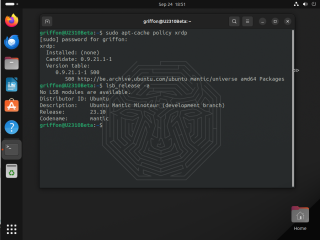
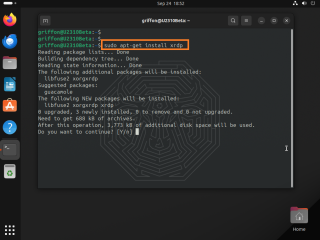

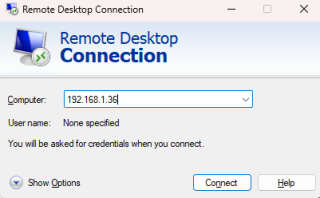
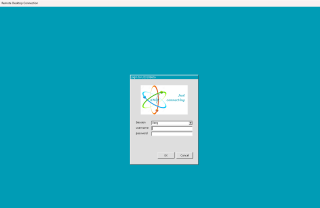

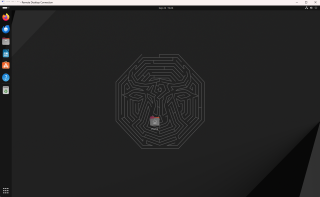
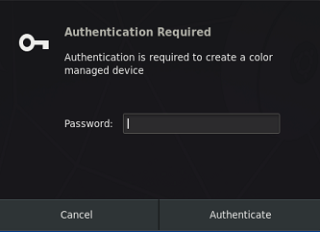
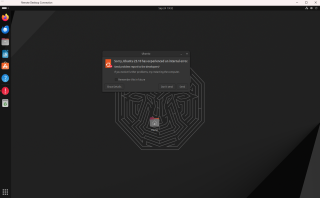

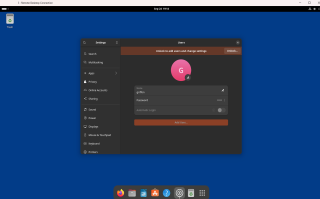
I didn’t want to assume you saw this.
I just read that Gnome is dropping GNOME Merge Requests Opened That Would Drop X.Org Session Support:
https://www.phoronix.com/news/GNOME-MR-Drop-X11-Session
@Brian;
Long time no see : )
Thank you for the info :)… Indeed, I was not aware of the possible switch to wayland in future version of Gnome Desktop. However, this would be something to be expected since indeed X11 is becoming obsolete and Wayland start to be shipping with a lot of Linux Distros…The question now is more…will XRDP team update their software to include Wayland support or we need to find alternatives 🙁
future will tell
Till next time
See ya